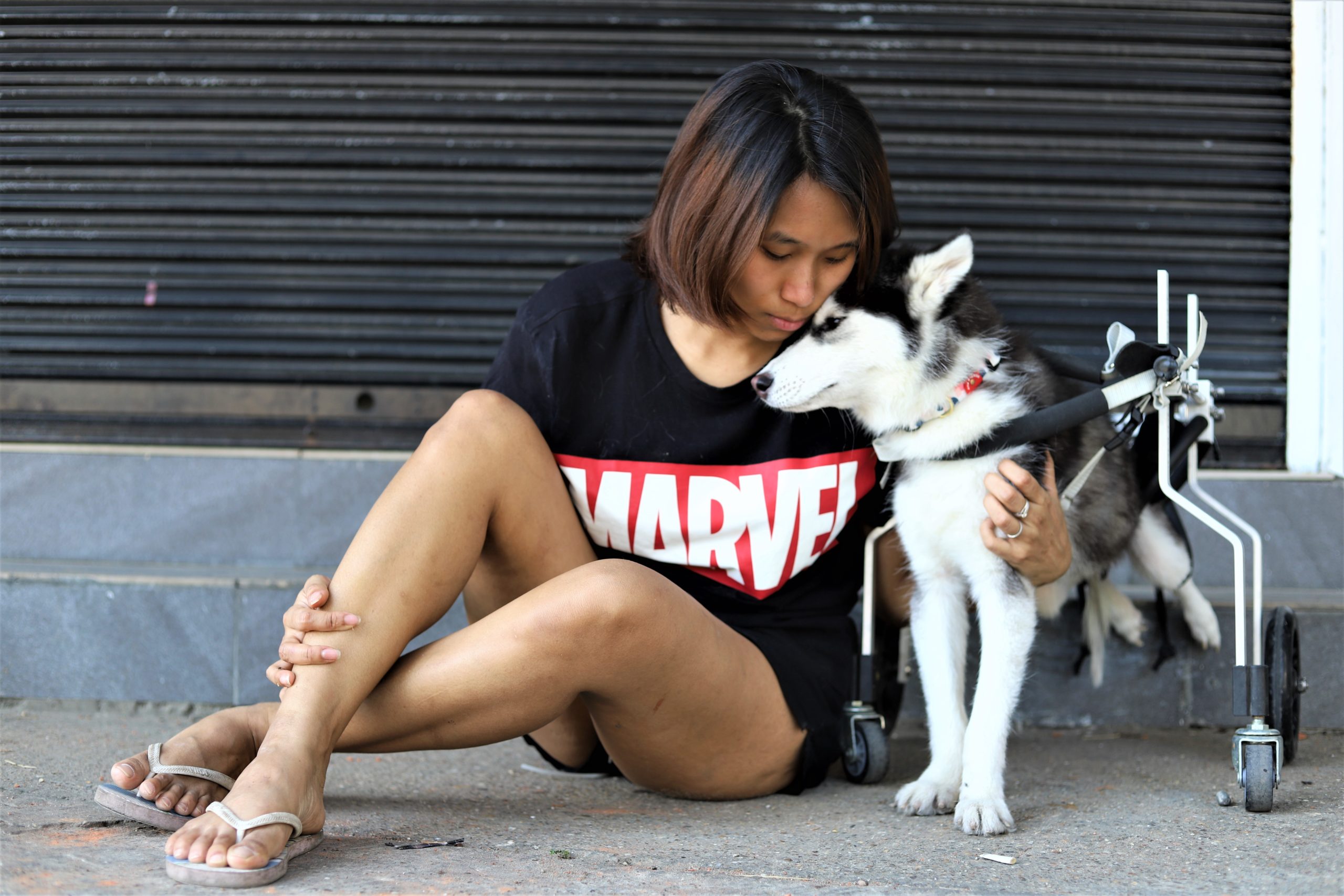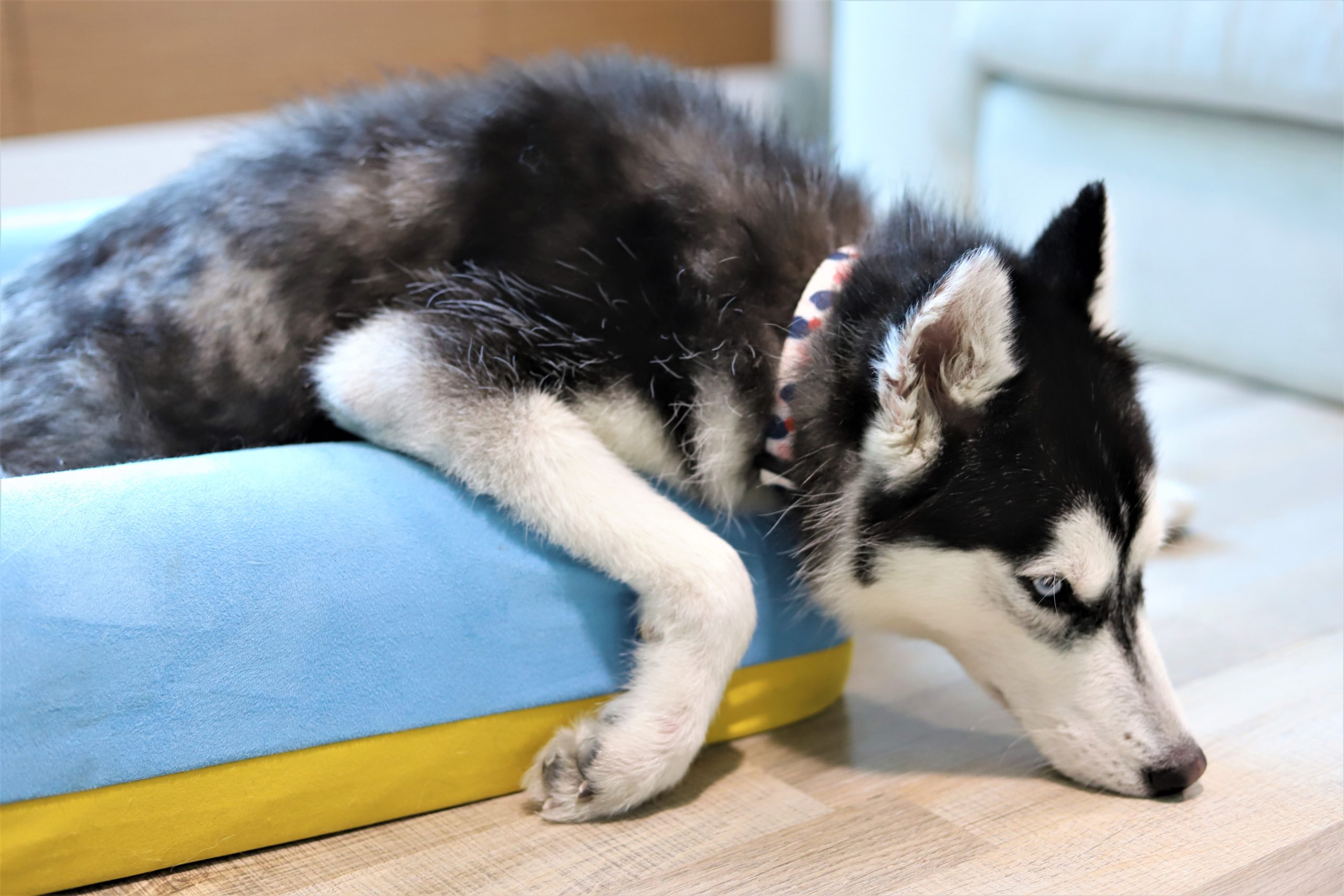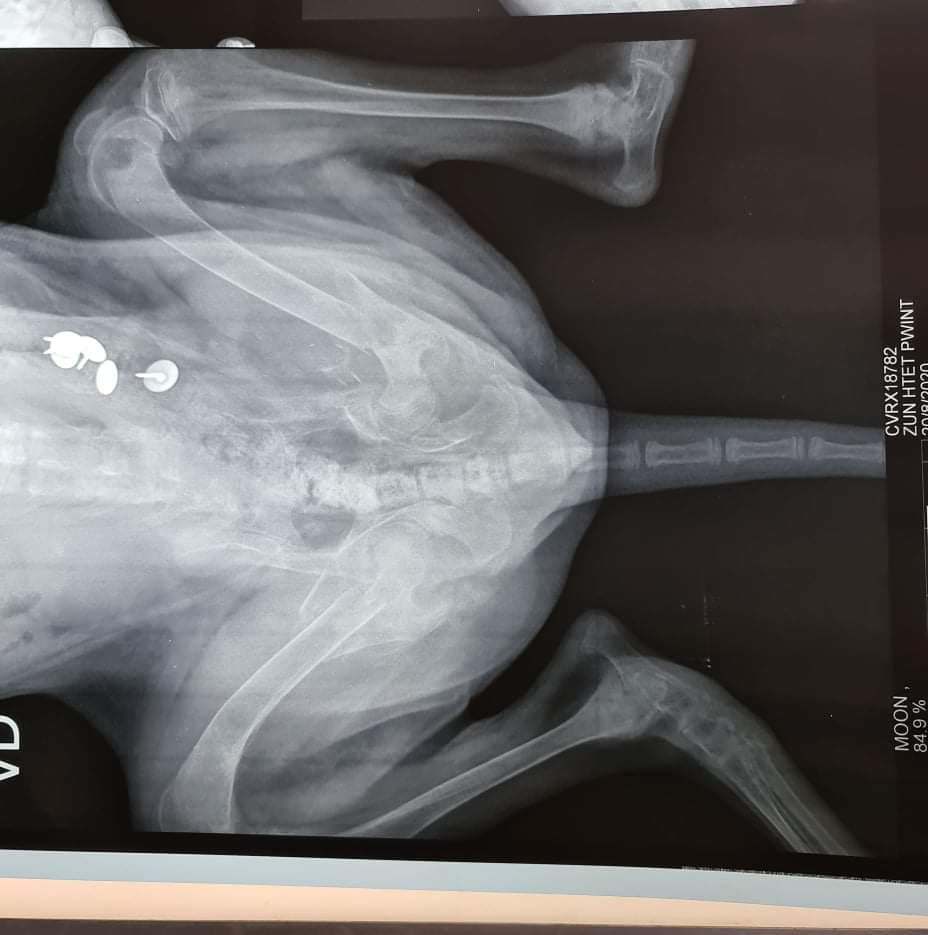It’s 34° Celsius (93.20 °F) on a January day in Yangon as Lucy, a Siberian Husky, is carefully lifted into her wheelchair by Zune Htet Pwint. Lucy, neglected as a puppy and unable to use her back legs, struggles to keep up with her pack.
She’s one of five huskies Zune has rescued from wealthy and poor families in recent years, and one of the countless victims of a recent fashion trend for these Arctic dogs sweeping through Southeast Asia.
The dogs first appeared in the homes of the rich, and now are popular pets in the tropical heat of countries from India to Vietnam. It doesn’t take long for families to realise that this is fraught fashion. As owners despair at the cost and effort of keeping the animal healthy, too many are dumping their pets on the street, or leaving them neglected.
“We have rescued, easily, 30 huskies in the past two years off the streets. That’s not counting the [other] animals,” said Yulia Khouri, the founder of rescue shelter Animal Mama in Cambodia.
At Zune’s home, her 17 rescue dogs now occupy an entire level of her home. Lucy lies on her special bed, designed to support her body that was severely damaged under the care of the breeder.
“Initially I bought two beds, one for Pudding and one for Lucy. When we rescued the pups, they were malnourished, and neither could walk. But Pudding dragged himself off his bed to crawl in with Lucy.”
It was no easy feat for Zune rescuing the pups from a ‘backyard’ breeder. As the fashion trend has taken hold, huskies have become seen by some breeders as an economic commodity – simply a low-cost, high-return business.
It was only by chance that Zune noticed Lucy’s life tragically unfolding on the Husky Lovers (Myanmar) Facebook Page.
“Lucy and Pudding were born healthy into a litter of five. They were the only ones who survived the coming weeks,” said Zune.

The question of how arctic dogs in the first place became fashionable in Southeast Asia has left activists shaking their heads.
“Huskies in Southeast Asia – awful. In Myanmar, the animals have become a symbol of wealth and power,” said Terryl Just of Yangon Animal Shelter.
In Thailand, Choty, a former breeder herself, first noticed huskies around 2004 at the beginning of a wave of popularity. According to animal rights groups, a similar trend began in Vietnam around the same time as Ho Chi Minh’s first pet store opened in 2006, while in Cambodia, as people began to enjoy higher disposable incomes in the mid-2010s, huskies became a favoured pet by many, according to Khouri.
In the pre-coup stability of Myanmar, emerging from decades of military rule, a growing middle-class in the mid-2010s similarly spurred on a similar demand for the dogs.
“In 2016 I came back from studying in Australia and all these wealthy people were parading Siberian Huskies through the streets. I couldn’t believe it!” said Zune.
While pet statistics of this detail are non-existent in the region, estimates from animal activists range from hundreds in Cambodia, over 1,000 in Myanmar, and well above that in Thailand

At the Gold Triangle Pet Shop in Yangon, cages are filled with fluffy sentient toys that are being wooed over by children. Two gorgeous blue-eyed huskies scamper around desperate for attention – the price tag for each is around $300, in a nation where the minimum wage is $3.40 per day. Across Southeast Asia the cost of the pedigree dog is similar, starting at around $300 and rising to over $1,600.
At Choty’s dog cafe in Bangkok, TrueLove at Netherland, her immaculately groomed huskies, 30 in total, bound up to greet crowds of young people wanting a moment of indulgence with these working dogs. Over the years she’s witnessed too many impulse purchases of huskies by families while wandering through night markets or at pet shops.
Few buyers receive an education – given no warning that huskies are high maintenance animals: energetic, naughty, and extremely smart.
“Huskies need a constantly air-conditioned room, a playground in the shade of trees and industrial fans around – love, attention and the family needs money to take care of them,” emphasised Choty.
While the initial outlay is high, the maintenance costs can be formidable, according to Just.
“We have people trying to dump their huskies at the Shelter,” said Just. “They complain ‘we paid top dollar for the pup and it smells’. It’s true, particularly if the dogs aren’t regularly groomed, housed in constant air-conditioning, and they aren’t walked in the cool of the night.”
Without proper care, not only do the dogs look shabby, but the health of the pups can deteriorate rapidly. Taking a husky into the heat can be deadly, said Dr Alicja Izydorczyk of the Soi Dog Foundation in Thailand.
“Huskies are Northern Breeds sled dogs with very thick fur and undercoat – specifically bred for use as sled dogs in sub-zero temperatures,” she said. “They are not suited for tropical environments, and easily overheat if kept in tropical countries. Heat stroke can be deadly for dogs.”
Dr Tu Tu Zaw Win of Care Veterinarian Services in Myanmar also spoke of the inherent health risks.
“Stress factors due to heat can have negative effects on the immune system,” he said. “Overexposed to heat, kept under the sun for long a duration or during extreme exercise in hot weather could be risky for them.”

Breeders in Southeast Asia should stop. This should be simply outlawed.
Back in 2020, before rescuing the dogs, Zune herself watched Lucy and Pudding’s health deteriorate through a breeder’s Facebook page attempting to sell them. Her decision to remove the pups came after she realised that neither Lucy nor Pudding could hold the weight of their tiny bodies any longer.
That was the day Zune marched into the breeder’s home demanding the pups be relinquished to her care. The breeder demanded she pay.
Shortly after Lucy and Pudding settled in their new home with Zune, it was time for their first medical checkup. X-rays of their backs were the first job. As Zune waited for the results, she noticed the lab assistant being evasive. The dogs had spinal damage – but there was more, something the worker was hesitant to reveal.
“I panicked. I saw thumbs tacks lodged in Lucy’s anus, five of them! Pudding had three. I ran to the vet, Dr Soe, who could only remove one that day, with his finger.” The only explanation was either shear neglect at best or abuse at worst.
Today, Lucy’s in her wheelchair, pulling herself over the path trying for a hell-raising speed as she attempts to keep up with her pack. She’s thriving in her new home, happier and safe with Pudding.
But it’s stories such as Lucy’s that have left animal rescuers asking the fundamental question underpinning the issue of huskies in the tropical heat – should these animals even be in Southeast Asia? There is no doubt for some.
“Breeders in Southeast Asia should stop,” said Khouri. “This should be simply outlawed.”


